Rain Watch for July 18-24: Disparity between regions widens, deficit in east
Excess rainfall in Tamil Nadu with 78 percent above LPA, Karnataka and Maharashtra with 25 percent surplus each, while Punjab (-43 percent), Haryana (-40 percent) and West Bengal (-10 percent) lag behind
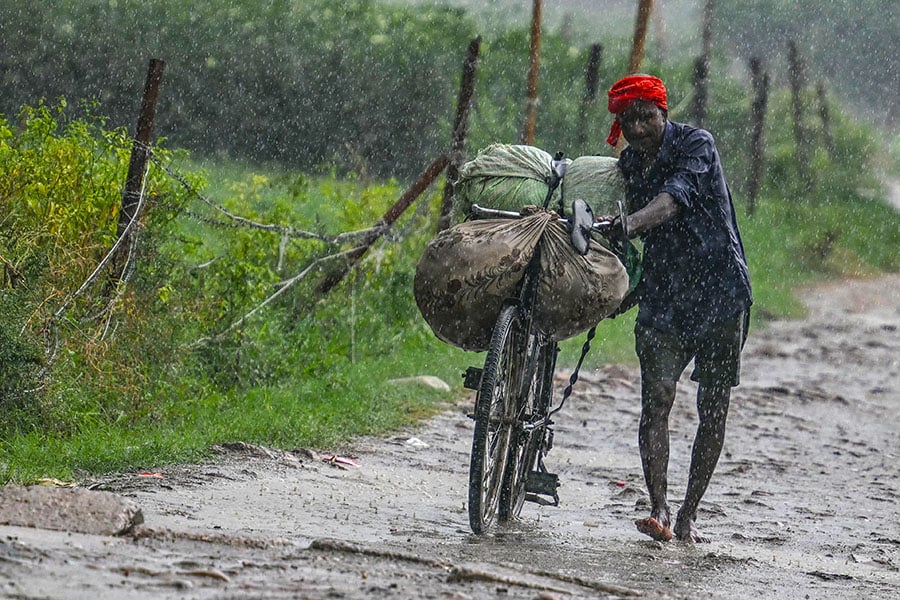 As of July 21, rainfall is 1.2 percent below the long period average (LPA) on a cumulative basis, as per Barclays analysis of IMD data. Arun Sankar/ AFP
As of July 21, rainfall is 1.2 percent below the long period average (LPA) on a cumulative basis, as per Barclays analysis of IMD data. Arun Sankar/ AFP
The disparity of rainfall between regions continued in the third week of July due to uneven distribution patterns, while a marginal rise in reservoir storage levels is still concerning. According to the Indian Meteorological Department (IMD), the monsoon trough is active and lies near its normal position. It is likely to continue to near its normal position during next four to five days. 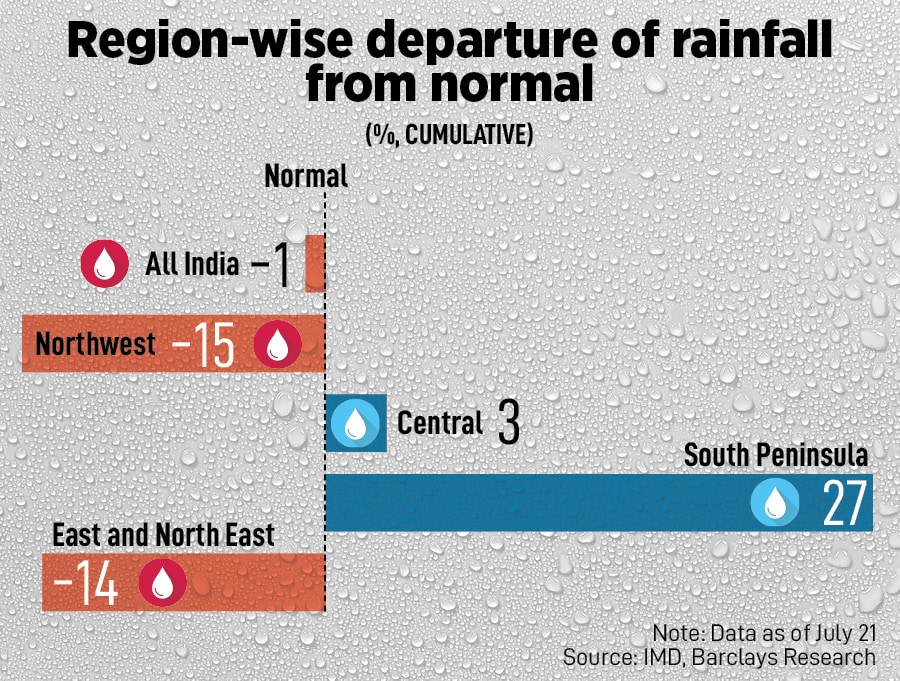
As of July 21, rainfall is 1.2 percent below the long period average (LPA) on a cumulative basis, as per Barclays analysis of IMD data. This compares with a 2 percent deficit as on July 14. As spatial distribution of monsoon remained uneven in the past week, excessive rain in the western and southern regions is starkly at odds with continued deficit in select northern and eastern states. 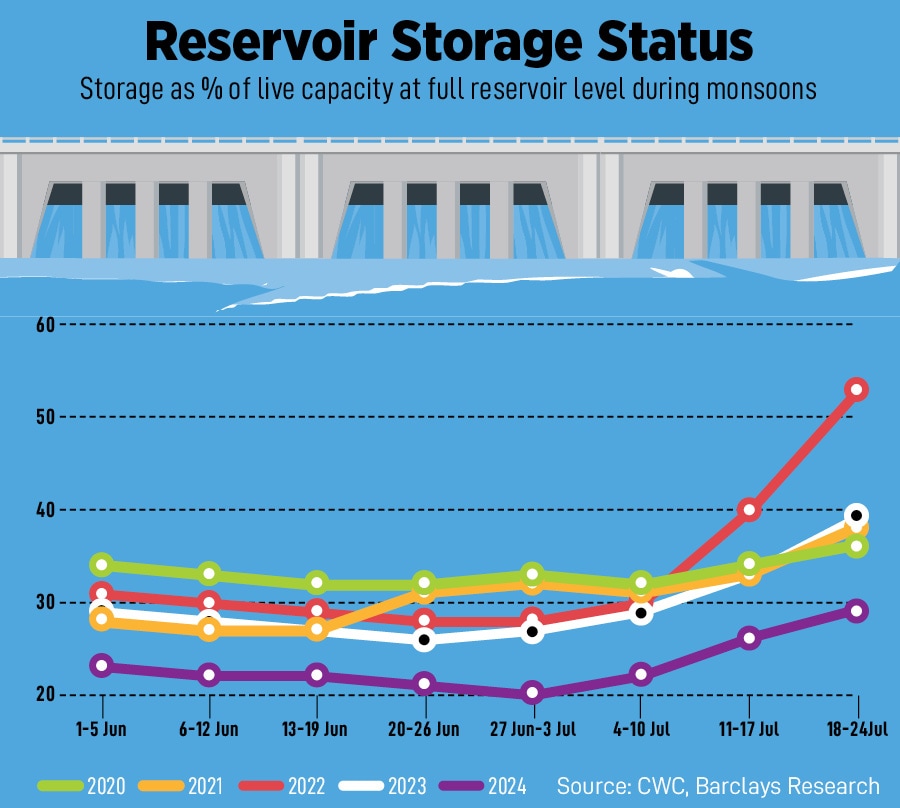
However, this masks inter-regional disparities, shows the analysis. There is excess rainfall in states such as Tamil Nadu with 78 percent above the LPA, Karnataka and Maharashtra with 25 percent surplus each, while there are deficit rains in Punjab (-43 percent), Haryana (-40 percent) and West Bengal (-10 percent). At the same time, the distribution of rainfall has improved since the start of July, with a decreasing number of subdivisions facing extreme rainfall conditions (either excess or deficient). Hence, it may be too early to assess the impact on the pace of sowing or the growth in sown crops in these states.
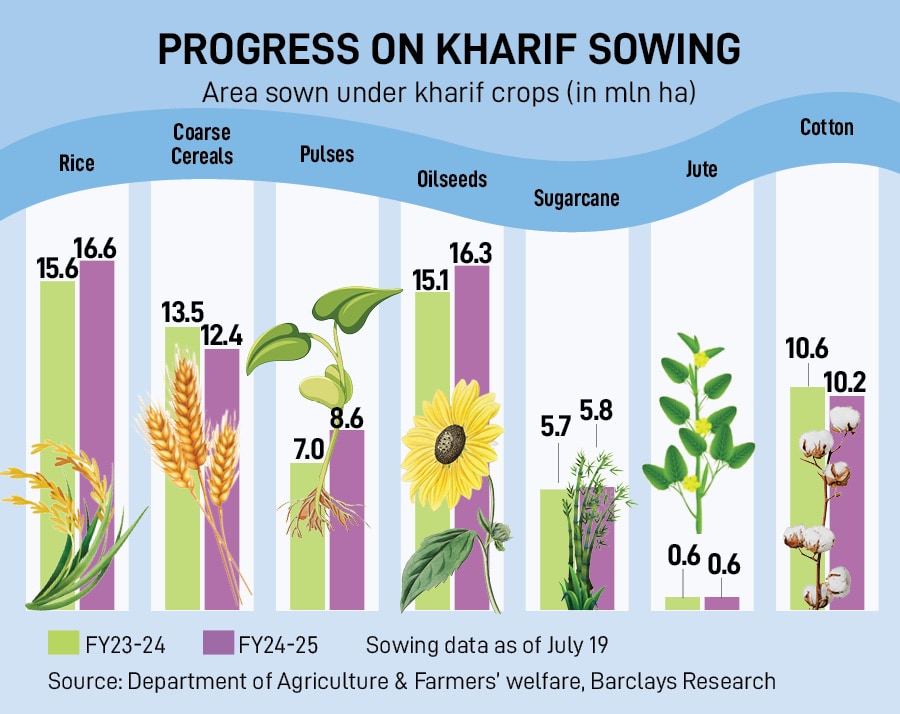
Also read: Rain Watch for July 11-17: Uneven shower patterns, sowing improves
Sowing has improved from last year. As of July 19, pulses acreage is 22.3 percent higher than the previous year, exacerbated by a low base. Sowing is more than 50 percent complete in pulses. 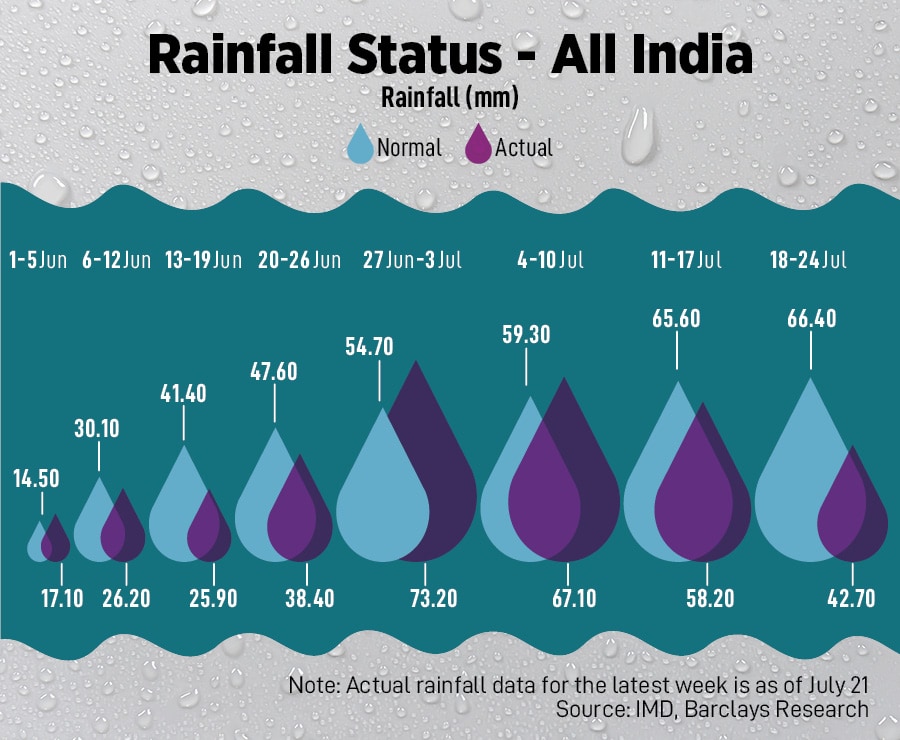
The reservoir storage levels are rising, but remain below the historical trend. As of July 18, storage in 150 reservoirs stood at 29 percent of the total capacity, which is higher than 26 percent in the previous week. This translates to 78 percent of the live storage of the corresponding period of last year and 87 percent of normal storage. 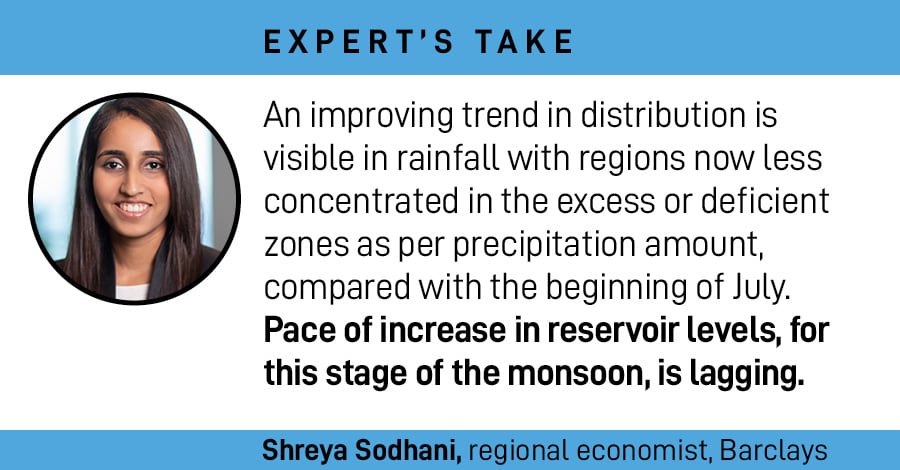
While storage has increased as a percentage of the total capacity storage week over week, it has slowed compared to the normal storage, indicating that the pace of increase in reservoir levels for this stage of the monsoon is lagging.














